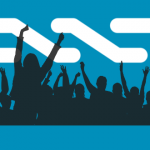PROJECT OVERVIEW.
Cryptonite also known as XCN is a cryptocurrency that uses M7 POW algorithm to secure transactions and it has 1840000000 total coins that are not fully pre mined. Cryptonite is based on Bitcoin and overall it works very much like Bitcoin except that it uses a very different mechanism for maintaining address balances to improve scalability.
BACKGROUND.
Cryptonite was launched in 2014 and was developed by the Mini-blockchain Project over a period of almost four months. Rather than adding up to the torrential flood of clone-coins available right now, Cryptonite is truly new, innovative, and useful to the cryptocurrency community.
It was the first crypto-currency to implement the mini-blockchain scheme along with many other innovative features. Mini-blockchain allows users to keep block headers as PoW records and discard old transactions.
HOW IT WORKS.
The mini-blockchain scheme is essentially like any other Bitcoin-based blockchain except that old blocks can be pruned from the chain. The block headers are kept as a PoW record but all old transactions can be discarded.
Address balances are managed separately in a hash tree structure called the account tree which is essentially a self-contained balance sheet designed to keep track of all non-empty addresses. New blocks act upon the entries in the account tree to perform transactions and the master hash of the account tree is embedded into the block headers to ensure consistency and agreement between nodes.
Since a proof-of-work is required for each new block, the account tree is updated in relatively periodic intervals of time. Since the master hash of the account tree is embedded into the block headers, the mini-blockchain helps to protect the account tree from malicious changes. However if the old blocks are being discarded the mini-blockchain is not secure unless the block headers are kept.
So to secure the whole system from attackers, a chain of interlocking proof-of-work solutions termed the proof chain is used. The proof chain is simply a chain of block headers which encapsulate all the energy expended by the network on a given chain. The chain of block headers feeds into the mini-blockchain and acts to secure it and the account tree against attackers, even without old transactions.
The mini-blockchain, the account tree, and the proof chain, form the 3 core components of the overall scheme and work together to create a highly secure and robust P2P transaction system very much like the Bitcoin system but with a much better level of scalability, bandwidth, and speed. By optimizing each core component to perform a certain function of the blockchain unparalleled compression can be achieved with a high level of security.
USES.
Micro-Transactions.
In Bitcoin and other altcoins where the full blockchain is required to synchronize with the network, small value transactions and transaction messages tend to be discouraged because they cause “blockchain bloat”. The scalable nature of the mini-blockchain scheme relieves the concern of blockchain bloat hence Cryptonite can have full support for transaction messages and micro-transactions because nodes don’t need to store transactions forever.
Multi-Sig Support.
Cryptonite has full native support for multi-signature transactions, which require multiple parties to sign a transaction with different keys before it is considered valid. Multi-sig transactions are useful in many real world situations, especially for consumer protection and escrow schemes.
SIMILAR COINS.
Ardor evolved from the ‘Nxt blockchain’. It has all of the features of NXT and additional multiple child chains can be created by companies, organizations, institutes, financial service companies, etc.
Since all processing will be done on the Ardor main chain, child chain creators won’t need to worry about common issues when creating a blockchain as well as securing it with enough nodes. Child chains will be able to utilize features currently seen in Nxt such as decentralized phasing, voting, and trading, as well as be able to interact with other child chains on the platform.
It will also be possible to completely prune any or all child chain transactions without affecting the security of the Ardor parent chain, allowing the blockchain size to be kept small. Together, the child chain and pruning concepts should ensure sustainable growth for the Ardor network for years to come.
IOcoin.
First released in August 2011, I0coin came before most other cryptocurrencies. I0coin has the best combination of transaction speed and security. 90 second confirmations make for quick transactions, so you can get on with your life.
Blockchain pruning allows users to set the size of the block chain stored locally, which frees up disk space for other uses. Thin clients also allow for minimal web hosting costs for sites using I0coin.
AEON.
AEON is a private, secure, untraceable currency. It was forked from cryptoNight, the same code Monero was built upon. Only difference is that Monero uses CryptoNight and AEON Cryptonight-light, which is a modified CN version with lightweight use in mind. Pruning allows the AEON blockchain to stay small and not outgrow devices with limited storage. This feature also improves anonymity by reducing age-based attacks.



















